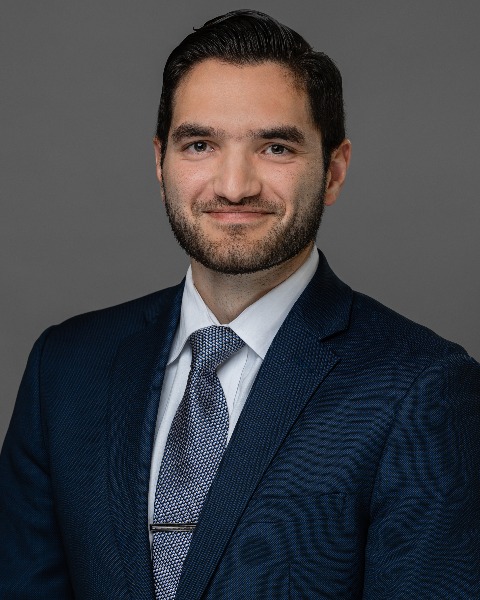Congenital
Category: Scientific Abstract: Oral/Poster
Assessing Attitudes and Perceptions of Congenital Heart Surgeons Towards Partial Heart Transplantation: Preliminary Results of a National Survey
R. N.. Suk, M. L.. Fabbrini, R. Garg, A. D.. Vogel
Alabama College of Osteopathic Medicine, Dothan, Alabama
Alabama College of Osteopathic Medicine, Dothan, Alabama

Andrew D. Vogel, M.S. (he/him/his)
Medical Student
Alabama College of Osteopathic Medicine
Dothan, Alabama, United States
Presenting Author(s)
Purpose: Partial Heart Transplantation (PHT) is a new investigative procedure under clinical trials for neonatal patients that uses living valvular tissue which grows in tandem with the patient. Our study assessed the awareness, attitudes, and perceptions of congenital heart surgeons who would recommend or likely perform PHT, which are currently unknown.
Methods: A novel online survey was conducted among members of the Congenital Heart Surgical Society. The survey measured surgeons’ knowledge, perceptions, and attitudes regarding the use of PHT for aortic, truncal, and pulmonary valve replacements in various age groups. Participants’ perceptions and attitudes were measured using a Likert scale (1=strongly disagree to 5=strongly agree) and means were calculated to analyze the differences in perceptions and attitudes. The survey also included surgeons’ demographics such as age, gender, race/ethnicity, and years of practice. An unpaired t-test was used to analyze the differences in perception of the use of PHT in various heart valve conditions among surgeons with < 20 years of experience versus >=20 years of experience. Differences in mean responses for the perception of PHT utilization in various patient age groups were calculated using parametric ANOVA.
Results: Our preliminary survey included 19 responses with 55.65% of respondents practicing for 20 years or more. The majority of the participants were males (89.47%), caucasian (73.68%), with a mean age of 57 years (range 36-88 years), and practicing in an urban area (78.95%). Almost all participants have heard about (94.74%) and understand the concepts (89.47%) of PHT. However, a lower proportion of surgeons agreed or strongly agreed that PHT is useful and should be utilized more in practice (47.37%), were comfortable with operating (63.16%) and recommending PHT (42.11%) for one of their patients. Among surgeons with >=20 years of experience as compared to those with < 20 years of experience, we did not find a significant difference in perceptions regarding the use of PHT in neonates (μ=3.47 vs. μ=3.07, P=0.48), infants (μ=3.15 vs. μ=2.89, P=0.69), children (μ=2.60 vs. μ=2.67, P=0.92), and adults (μ=2.05 vs. μ=1.89, P=0.78). Perceptions regarding the use of PHT for different patient age groups developed significant difference (P=0.016). More surgeons believed that PHT is appropriate for neonates (42.12% ), infants (36.84%), and children (34.21%) compared to adults (13.16%).
Conclusion: As PHT is an investigative procedure, it is essential to determine its acceptance in the field of congenital cardiology. Surgeons are becoming more knowledgeable of the procedure and its concepts; however, there is a gap between knowledge and surgeons’ willingness to recommend, utilize, or perform PHT. Furthermore, the acceptability of this procedure varies in different patient age groups. Surgeons seemed to find PHT more appropriate in pediatrics vs the already established valve replacement procedures in adults. Further research must be dedicated to investigate this new procedure which could improve the prognosis and mortality among pediatric patients with valvular insufficiencies.
Identify the source of the funding for this research project: There is no source of funding for this research project.
